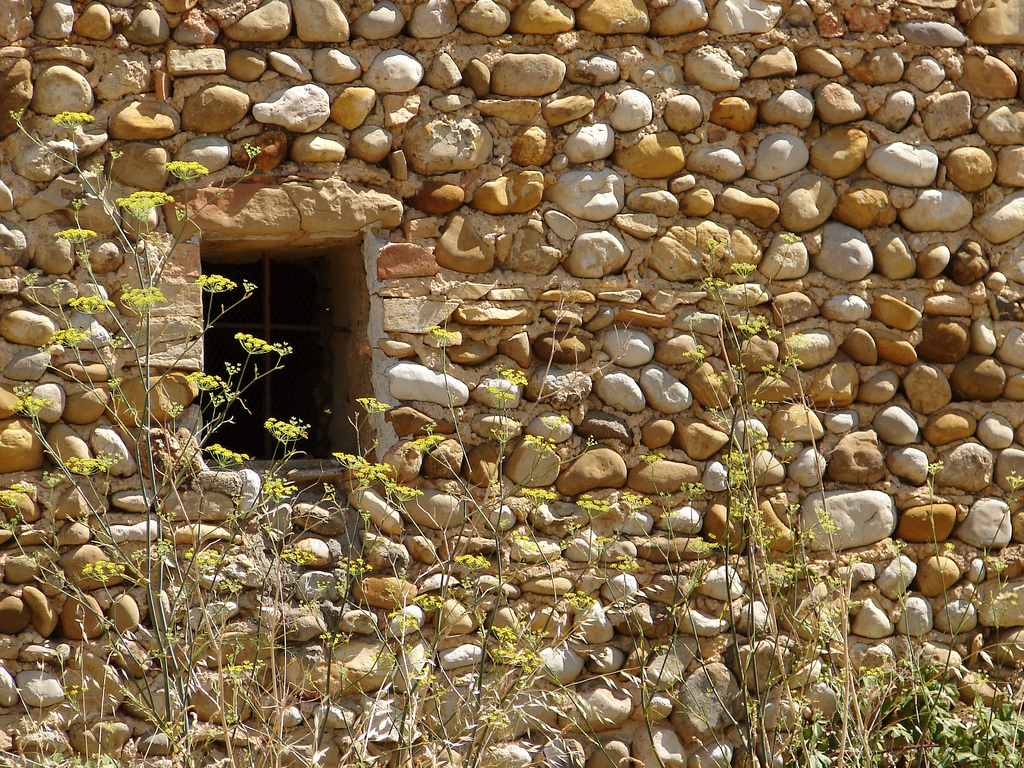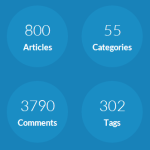Sometimes you don't need statistics. Sometimes you don't need retrospectives. Sometimes you don't need superlatives.

How to Be More Productive: The Chunking Technique
“You’re so productive!”
“You’re so disciplined!”
“You’re so handsome!”
OK, I may have misremembered that last one. But I did receive the first two compliments more than once. I usually accept this positive feedback reluctantly, given my ongoing frustrations about “never getting anything done around here!”
Nevertheless, I will share with you my approach to my daily work activities, and then you can decide for yourself whether the compliments are deserved or not. The heart of my productivity technique is what I call the chunking technique:
- Chunking (in psychology) is a phenomenon whereby individuals group responses when performing a memory task.
- Chunking (in writing) is a method of presenting information which splits concepts into small pieces of information.
As you can see, chunking can mean both grouping small things into larger chunks AND splitting large things into smaller chunks.
In my work, I do both.
Chunking
A chunk of work is any focused activity lasting between approx. ten minutes and one hour, with the average being less than 30 minutes.
A chunk of work can be a complete self-contained task, such as emptying my mailbox. But it can also be a well-defined slice from a larger project, such as the first rehearsal of a new presentation. Or it can be the opposite: a collection of unrelated smaller tasks lumped together, such as finishing ten of those pesky little tasks on my to-do list. In other words, a chunk is a well-defined activity of 10 to 60 minutes, which is either one complete task, or a portion of something bigger, or a grouping of several things smaller.
There are three crucial requirements for chunks:
- They have a natural and logical start and finish;
- They may not be interrupted (except when I’m not given a choice);
- And breaks are welcome (even desirable) between the chunks.
Examples: Last Friday’s Chunks
My first chunk last Friday involved me leaving the house after breakfast at 9:15 and driving up to my team member Nicolas’ house to start a new video recording with him. I knew this chunk would last exactly 45 minutes because we had an online team hangout scheduled at 10:00.
The second chunk was the team hangout, which was surprisingly short. Only a few team members were available. Therefore, it lasted just 20 minutes.
The third chunk involved Nicolas and I continuing our recordings of several new videos and then me traveling back home. This took exactly 60 minutes. I allowed no interruptions, no email, no Twitter, no Facebook. I only focused on the videos. Clearly, these two “video chunks” on Friday were part of a larger project: recording and publishing three new videos.
When I came home, I first took a 10-minute coffee break.
The fourth chunk was a collection of tasks: I processed all emails I received in the night, and handled all questions and notifications on Twitter, Slack, Facebook and LinkedIn. This chunk was 35 minutes and then all channels were clear. This chunk was a grouping of totally unrelated activities. They were only similar in the sense that I was in “response mode” all the time: simply replying to dozens of messages.
Chunk number five took only 10 minutes: posting and scheduling some interesting articles I had found the night before. For me this is a recurring two-chunk activity: reading in bed at night for about 30 minutes, and then posting articles for about 10 minutes the next morning. This is always two chunks, separated by a good night’s sleep.
Chunk six was supposed to take at least half an hour, but I had to stop after 15 minutes. While testing our new Management 3.0 web shop I ran into issues that had to be resolved before I could continue. A nice example of an interrupted chunk!
I then spent 35 minutes on chunk number seven: collecting and preparing images for one of the three videos we had recorded this morning. It was finished after I had sent the images to Nicolas. I will have to do the same for the other two videos, but those will be chunks for later. I have done enough (for now) to keep Nicolas unblocked. The entire project (the making of three videos) will take eight to ten chunks in total, is my guess.
And then it was time for another break: I went for a walk, enjoyed a good lunch, and I read a bit of news and a chapter of a non-fiction book. Admittedly, reading non-fiction could count as a chunk of work, but I didn’t record the time stamps. It’s sometimes hard for me to decide where business ends and pleasure starts. 🙂
At the end of my 30-minute walk, I ended up at one of my favorite coffee bars in Brussels. A perfect place for me to relax, work, and stay focused. This is how I spent the afternoon…
Chunk eight was a collection of lots of unrelated small tasks. Basically, I cleaned out my task list, so that I only had a few larger items remaining. It took me 45 minutes. It’s another example of a grouping of activities. As usual, I was entirely focused. No emails, no Twitter, no Facebook, no Slack, just killing tasks.
In chunk nine I picked up testing the web shop again, after team member Hannu notified me that he had implemented some fixes. Yay! I could now test everything and this took me about 50 minutes.
Coffee break! (well earned)
I then spent 35 minutes booking flights and arranging hotels in chunk number ten, for a trip to Erlangen (Germany) and Manchester (UK). Again, it was a grouping of smaller tasks, although these were strongly related. Booking hotels and flights for several trips in one session saves me a bit of time.
The last four chunks were all rather small: handling emails I had received during the day (10 minutes), processing highlights I had made in some Kindle books (10 minutes), calculating new shipping fees for the web shop (15 minutes), and a bunch of small unrelated tasks that somehow popped up out of nowhere (10 minutes). There was another coffee break somewhere in between, I’m sure, and I wrapped it up with 15 minutes of relaxed reading and a nice 30-minute walk to be home for dinner.
I had a few more chunks of productivity in the evening after dinner, two of them involved the writing of this blog post.
No Pomodoro Technique
Some readers may point out the similarity of my chunking technique to the pomodoro technique, which is about cutting up work into 25-minute timeboxes and then forcing yourself to take a break.
Despite the similarity of focusing on one activity, not getting distracted, and taking regular breaks, I want to emphasize the crucial difference: Unlike pomodoros, chunks have different natural sizes. I really don’t see the point of setting a kitchen timer that will interrupt me in my work after 25 minutes. Several of my chunks lasted 35 minutes and then they were done. Why would I allow myself to be interrupted at the 25th minute? It would break my flow! It would also cause stress and more task-switching. And what’s wrong with a sequence of focused smaller chunks of 10 or 15 minutes each? My average chunk size last Friday was about 28 minutes. That’s almost the same as the default timebox in the pomodoro technique. But I prefer the variety and flexibility of my chunking method over the rigidity of a kitchen timer. A task is done when it’s done, not when a bell is ringing.
The pomodoro technique is like a wall of same-sized bricks. The chunking method is like a wall of silly-sized stones.
Conclusion
OK, maybe I am a bit more disciplined and productive than other people. It’s not that difficult, really.
- Focus on one thing at a time and don’t let yourself be distracted.
- If work takes more than an hour to do, cut it up in chunks that each take less than an hour to complete.
- If you have lots of little things to do, bundle them into bigger chunks that take at least 10 minutes each.
- Allow yourself frequent little breaks between the chunks to clear your mind and enjoy your progress and accomplishments.
That’s all there is to it, really.
Note that it’s OK to work on different projects! I can work on a presentation, a blog post, a courseware module, a website, and a video interview, all on the same day. In fact, there’s evidence this may help you be more creative. (Professor David Burkus told me today that ongoing work that you’ve “parked” in your brain can be “incubating”, which generates more creative ideas.) However, you should still prevent task-switching by chunking: build your colorful wall one stone at a time.
p.s. This post was written in four chunks: Chunk one was the first half of a draft version (30 minutes), and chunk two was the second half of the draft version (40 minutes). I did both on Friday. Chunk three was a complete polished version (45 minutes), and chunk four was the publication on this blog (45 minutes). I did both on the next Monday.
photo credit: (c) 2007 Marcel Oosterwijk, Creative Commons 2.0







